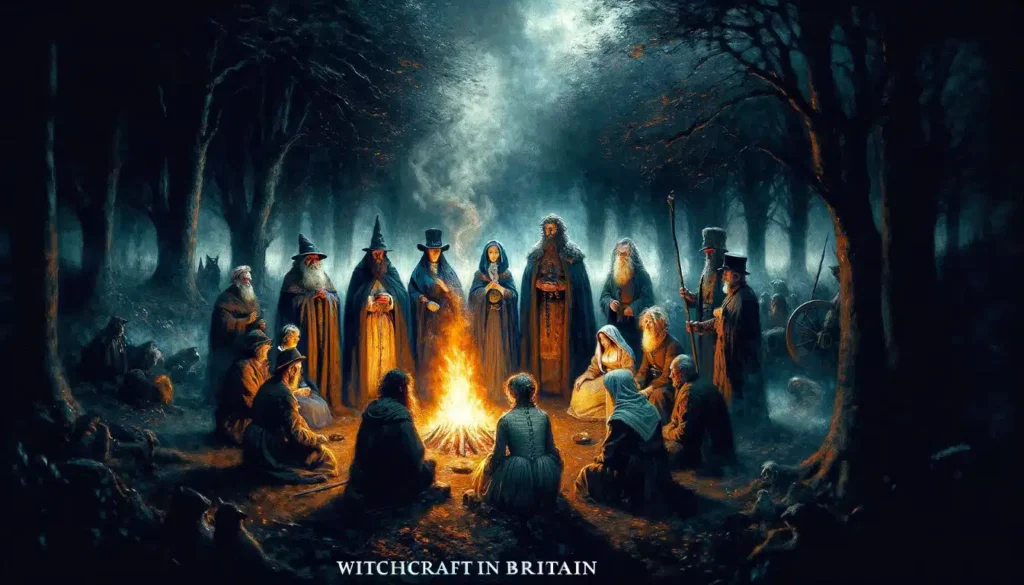
Ooh, now that’s a topic with fire and shadow. 🔮✨
Witchcraft in European folklore sits right at the crossroads of awe and anxiety—both feared and revered, marginalized and mythologized. It’s a long, tangled history of magic, medicine, myth, and moral panic. Let’s walk the line between fear and fascination.
🕯️ The Origins: Wise Women, Healers, and the Old Ways
Before “witch” became a term of terror, it was often linked with:
- Cunning folk: Healers, herbalists, midwives—people (often women) who knew plants, remedies, charms, and folk rituals.
- Pagan remnants: Pre-Christian Europe had strong spiritual traditions tied to nature, seasons, and fertility rites. Many early “witches” were likely the inheritors of these practices.
- Celebrated in some places, especially in rural areas, these figures were respected—but also feared because of their perceived connection to the unseen.
😨 The Fear: Witch Hunts and Demonization
By the late Middle Ages, and especially from the 15th to 17th centuries, things turned dark:
📜 Church and State Clamp Down
- The Catholic Church, followed by Protestant reformers, began associating folk magic and healing with heresy and devil-worship.
- Manuals like the Malleus Maleficarum (“The Hammer of Witches”, 1487) fueled hysteria, calling witches agents of Satan.
🪄 Common Accusations Included:
- Causing sickness or storms
- Cursing crops or cattle
- Shapeshifting into animals
- Flying to secret night sabbats
- Having sex with demons or familiars (yep, that was a thing)
🔥 The Witch Craze
- Tens of thousands (mostly women, though not exclusively) were tried, tortured, and executed.
- Salem is infamous, but Germany, Scotland, France, and Switzerland were actually the most brutal.
This was less about actual magic and more about:
- Misogyny
- Social control
- Scapegoating during hard times (plagues, famines, etc.)
- Suppression of local, non-institutional knowledge
🧙♀️ The Fascination: Folklore and Survival of the Magical
Even at the height of the witch hunts, folk belief in magic and witches didn’t disappear—it just went underground or turned into storytelling.
In Folklore:
- Witches became mythical figures—sometimes terrifying, sometimes helpful.
- Think of Baba Yaga in Slavic lore: a crone in a flying mortar who tests or guides heroes.
- In Scandinavian and Celtic traditions, witches were often linked with the Otherworld, prophecy, or ancient goddesses.
- Familiars, potions, enchanted brooms, and hexes became part of the pop culture of the time—especially through fairy tales and local legends.
🌒 From Folklore to Fiction: The Witch Reborn
By the 18th and 19th centuries, witchcraft shifted from accusation to symbol:
🕰️ Romanticism & Occult Revival
- The 1800s brought a renewed interest in mysticism, folklore, and paganism.
- Writers and artists started to reclaim the witch as a mystical, even heroic figure.
- Groups like the Hermetic Order of the Golden Dawn and eventually Wicca (mid-20th century) helped reframe witchcraft as a spiritual path.
📺 Modern Pop Culture
- From evil hags to empowered heroines: witches became icons of rebellion, wisdom, and independence.
- Sabrina, The Craft, Charmed, Harry Potter, A Discovery of Witches
- The “witchy aesthetic” exploded—crystals, tarot, herbs, moon rituals, etc.—often blending old folklore with new age spirituality.
🧹 Witchcraft Today: Echoes of the Old and New
Modern witchcraft, often under labels like Wicca, paganism, or traditional witchcraft, draws deeply from European folklore:
- Wheel of the Year festivals (like Samhain, Beltane)
- Use of herbs, charms, divination
- Reverence for nature and the feminine
- Embracing the “witch” as a symbol of autonomy, especially for women, queer people, and other marginalized voices
🧙 Final Thought:
Witchcraft has always danced between light and shadow—a reflection of humanity’s deepest fears, but also its fiercest hopes. From village healer to demonic outcast to pop-culture icon, the witch never dies. She evolves.
Want a deep dive into a particular region’s witch lore (like Scottish sea witches, Italian streghe, or Norse seeresses)? Or maybe a spell or charm from old folklore? I’ve got plenty in the cauldron. 🪄🖤